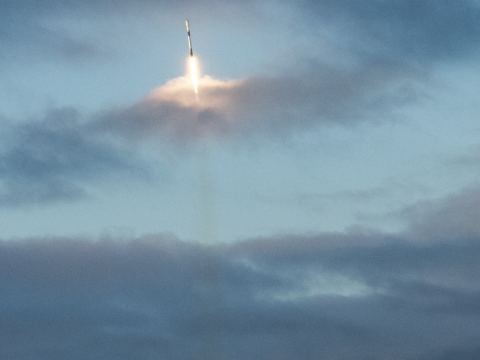SIGNAL Executive Video: Nokia and Fenix Group: Revolutionizing Tactical Communication
Telecommunications technology leader Nokia is acquiring Fenix Group, a company focused on tactical communications solutions and the development of products—such as the Banshee family of systems—that deliver fast, low-delay data connections to multiple devices and users. Nokia is leveraging Fenix Group's expertise in developing telecommunication solutions for warfighters, particularly those operating in austere environments. Fenix Group becomes part of Nokia Federal Systems and is ready to merge with Nokia’s technologists to keep innovating in communication with dual-use products that solve problems and provide enterprise value, leaders said.
Comprised of veterans, particularly from the special forces community, Fenix Group employees encountered communication problems while deployed. Information wasn’t sent directly from sensors to people on the battlefield, instead passing through third-party analysts and experts, a process that slowed things down. The operators also saw the need for a system reliable against communication jamming when facing technically adept enemies.
“We still kind of think of ourselves as warriors,” David Peterson, CEO of the Fenix Group, explained during a recent Executive Video with SIGNAL Media. “That’s why we started the company, to provide some kind of overmatch advantage to them."

[Nokia is] always looking to create value in the communications market.
As the Fenix Group began to work with the Department of Defense (DoD), it focused on developing a product that would increase situational awareness and communication by giving troops direct access to the sensors, and the information from those sensors, while reducing costs.
Fenix began working with Nokia because Nokia’s multimodal small-cell radio provided a base for added communication capabilities like military radios and edge computing. Peterson said the two companies saw potential in working together that was “a good technical and cultural match.”
The two companies enhanced Banshee, a line of communication products that use a private LTE network to establish fast, reliable and scalable communication that works without satellites. Peterson explained that a backup plan is necessary for when cloud communication fails.
“[Banshee] can connect hundreds of soldiers to that radio with nothing more than a SIM card, that they don’t need a $20,000 specialized radio to pass data,” Peterson said.
As a company, Nokia is “always looking to create value in the communications market,” explained Mike Loomis, general manager of Nokia Federal Systems. The company has decades of research and development capability in many products, including cellular, and was interested in innovating in mobile telecommunications when it began working with Fenix Group.
Nokia looked at things like Joint All-Domain Command and Control, or better known by its acronym JADC2, and began to focus on revolutionizing communication in contested environments, goals that meshed with Fenix Group, Loomis said. After the recent acquisition, Nokia will be able to “put the weight of their R&D into Fenix’s hands,” Loomis added.
“Joining forces with Nokia, we have thousands and thousands of engineers now available who are experts in telecommunications, who we can work with to build fit-for-purpose systems that directly support the warfighter,” Peterson said. “What we’re doing next is going to be game-changing.”
The immediate goal of the newly merged companies is to release a new version of the Banshee product. Fenix Group engineers will begin a “hard press” to integrate with the robust Nokia team and push through more innovations, Peterson said.
The path forward dovetails with the DoD’s strategy on 5G to drive investments in communication solutions such as Banshee, which Loomis explained will have tactical applications and relevance in the new world of 5G. Requirements for the military have converged with industry requirements, allowing for dual-use technology that can be leveraged for more economic benefit.
5G is “the beginning of a transition of bringing cellular to enterprises,” Loomis said. He explained the Fenix Group has shown its value at the strategy level within the DoD, and the small unit level.
With Nokia, Peterson said the Fenix Group’s products also will scale with NATO and other international partners. The unified companies will be able to build a capability that can go global and have enterprise opportunities as a dual-use product, such as the first responder market.
Loomis emphasized that Banshee has innovated with its bandwidth as well as secure and wireless network capability, and more. “I’m really looking forward to seeing the realization of the capability that David’s started with the Banshee product in becoming mainstream in [the] DoD,” Loomis said.
The teams are working to lay the groundwork for the next generation of Banshee products.
With Fenix Group, Loomis said Nokia won’t be “starting from zero” in the market, and instead has a starting point to build a revolutionary next generation product.
“I’m really happy to be working together under the same roof,” Loomis said.





Comments